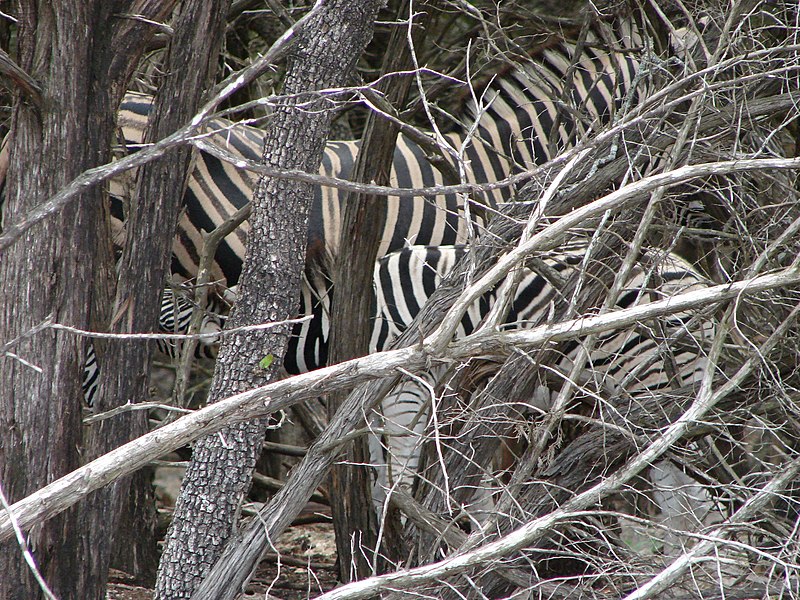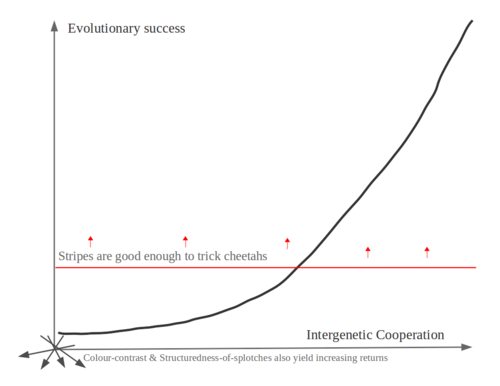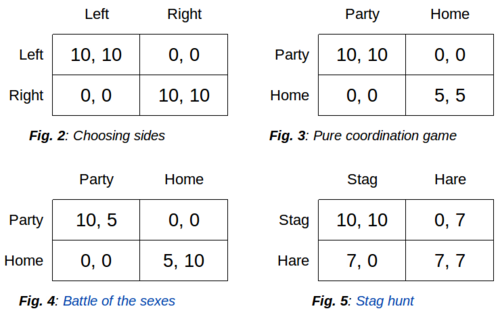This has confused me ever since I learned about evolution.
As Mr. Shepherd explained it to me in the second grade, zebras are hard to kill because, when the zeal runs, their collective stripes make it hard for a predator to visually pick out an individual zebra to tackle.

So the benefit of stripes comes from
- high contrast
- highly structured shapes
- in a group
In economic terms, increasing returns to scale – and increasing returns to coördinated group action (“Let’s all be stripey”).
COÖPERATION by Selfish Genes?
So how can that process get started, if the returns to stripes don’t pile up until you get to a really high level of contrast, a very certain structure, and group coördination? Even with a constant scaling factor, how could genes that promote themselves, inside an individual zebra, coördinate to get many zebras to all adopt stripes at once?

It’s not like genes can talk to each other. How could they have coöperated to achieve a better group outcome? Humans do so with language. If there’s a fire in the building and everyone’s crowding the exit, someone can yell: “Stop! We all need to back up and wait in a line. Then we’ll get through this exit faster and all live. None of us will get through if we push each other.” But the genes don’t have a way to communicate for better group outcomes – right?
Maybe stripes could evolve if it only took a few mutations to turn on high-contrast stripes (then the possibility of coöperation arising randomly would be greater … but still small). But I also wonder if there isn’t a population dynamics answer. Or a game theory answer. Is sexual selection involved? Is the sexual transfer of genes involved?

EVOLUTION OF STRINGS
I think about evolution in an abstract way. Even though I know there’s meiosis and specific proteins and RNA’s change the expression and so on, … I just think about genes-as-strings. They mutate and cross-pollinate, with the sexier strings pollinating more. Nature selects (in a Brownian manner) from the pool for the next generation.

Does anybody know a good book or paper about the mathematics of sexual selection, like in a dynamical systems model? Or some other explanation for how the zebra got its stripes?

ANSWERS FROM READERS
Readers answered with a lot of mathematical biology links (great!). As I read through what they’ve sent, I’ll add to this list:
- The pattern of zebra stripes is fully determined by day 21-35 of embryonic development (out of a year-long gestation). Melanoblasts mark out the patterns on the zembryo. Turing Patterns in Animal Coats, via Artemy Kolchinsky




